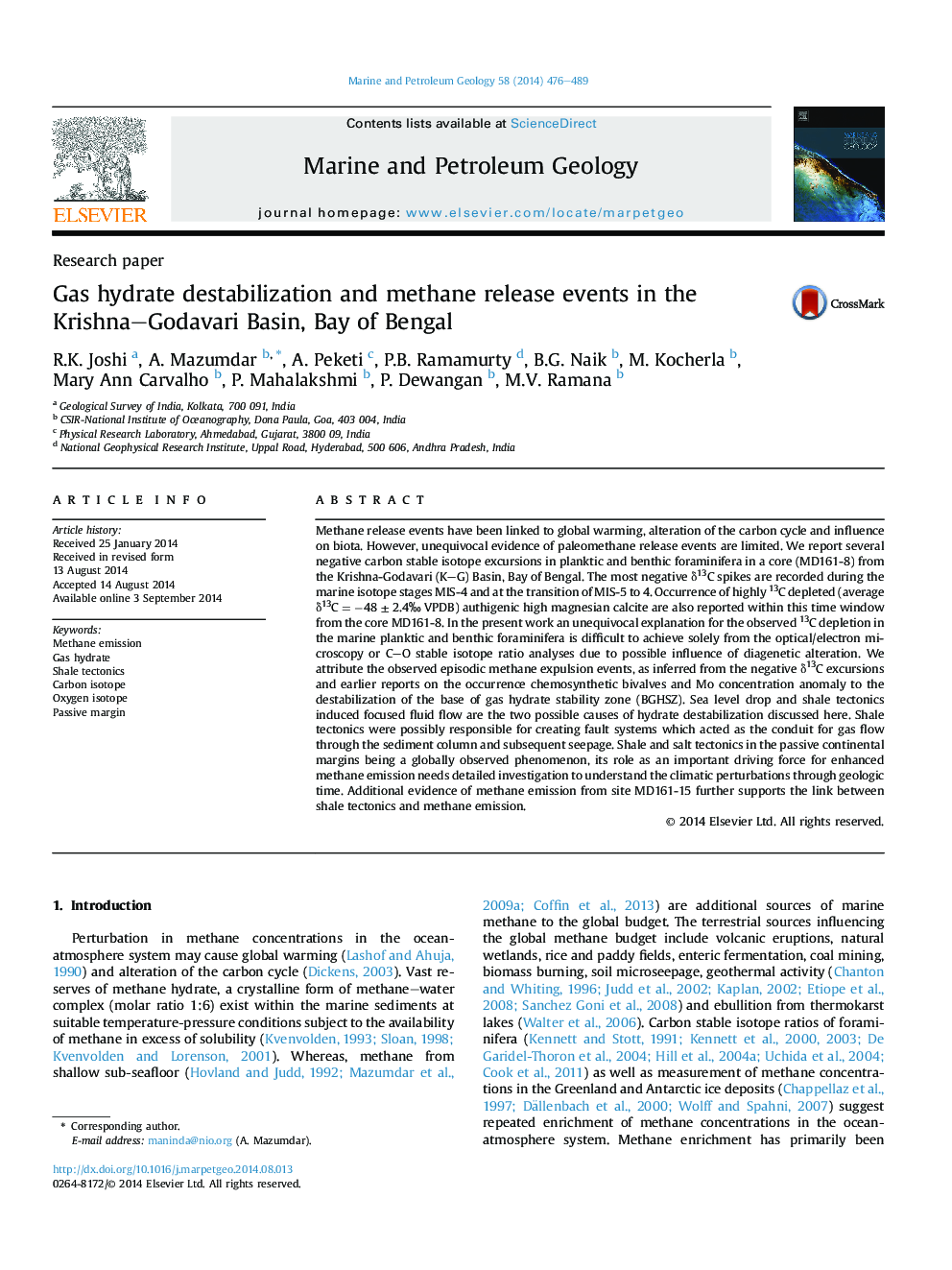| کد مقاله | کد نشریه | سال انتشار | مقاله انگلیسی | نسخه تمام متن |
|---|---|---|---|---|
| 6435252 | 1351619 | 2014 | 14 صفحه PDF | دانلود رایگان |
- Carbon isotope perturbation in foraminifera in a core from Krishna-Godavari basin.
- Highly negative δ13C excursions are attributed to methane emission events.
- Shale tectonics and sea level change played important role in methane emission.
Methane release events have been linked to global warming, alteration of the carbon cycle and influence on biota. However, unequivocal evidence of paleomethane release events are limited. We report several negative carbon stable isotope excursions in planktic and benthic foraminifera in a core (MD161-8) from the Krishna-Godavari (K-G) Basin, Bay of Bengal. The most negative δ13C spikes are recorded during the marine isotope stages MIS-4 and at the transition of MIS-5 to 4. Occurrence of highly 13C depleted (average δ13C = â48 ± 2.4â° VPDB) authigenic high magnesian calcite are also reported within this time window from the core MD161-8. In the present work an unequivocal explanation for the observed 13C depletion in the marine planktic and benthic foraminifera is difficult to achieve solely from the optical/electron microscopy or C-O stable isotope ratio analyses due to possible influence of diagenetic alteration. We attribute the observed episodic methane expulsion events, as inferred from the negative δ13C excursions and earlier reports on the occurrence chemosynthetic bivalves and Mo concentration anomaly to the destabilization of the base of gas hydrate stability zone (BGHSZ). Sea level drop and shale tectonics induced focused fluid flow are the two possible causes of hydrate destabilization discussed here. Shale tectonics were possibly responsible for creating fault systems which acted as the conduit for gas flow through the sediment column and subsequent seepage. Shale and salt tectonics in the passive continental margins being a globally observed phenomenon, its role as an important driving force for enhanced methane emission needs detailed investigation to understand the climatic perturbations through geologic time. Additional evidence of methane emission from site MD161-15 further supports the link between shale tectonics and methane emission.
Graphical Abstract315
Journal: Marine and Petroleum Geology - Volume 58, Part A, December 2014, Pages 476-489
